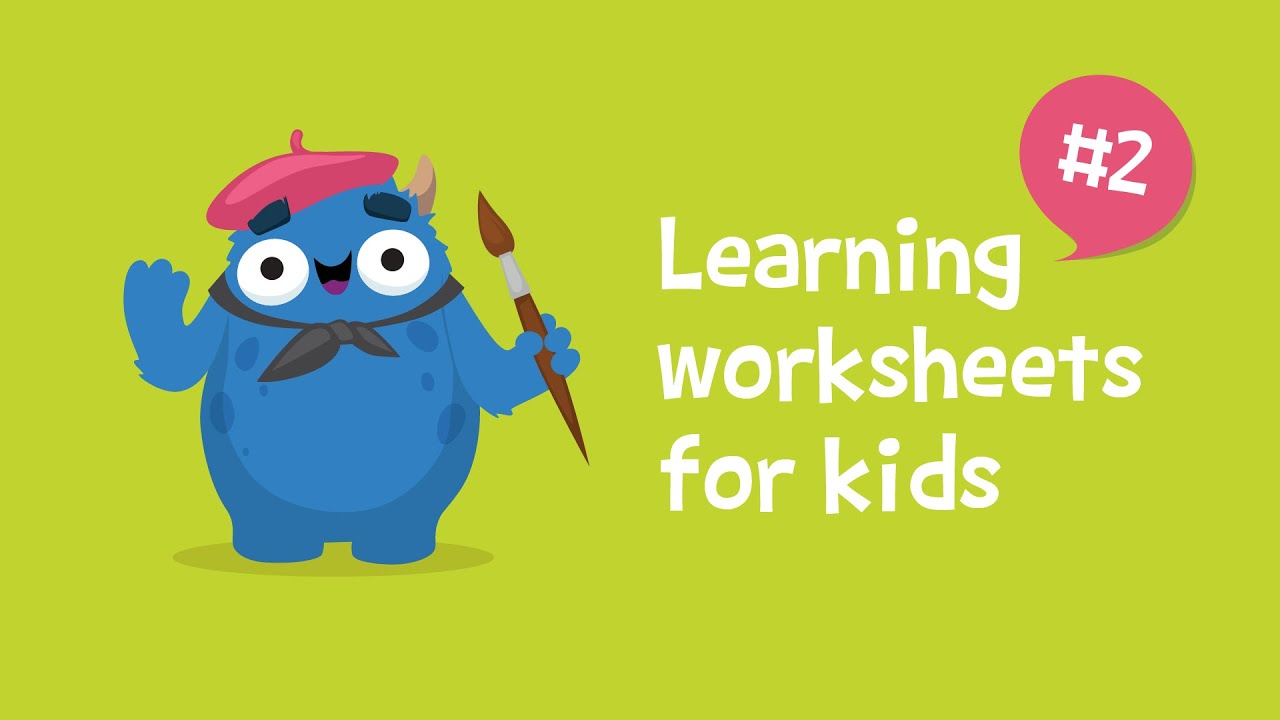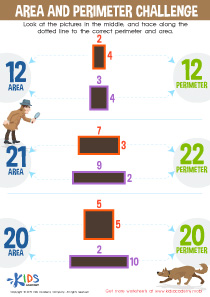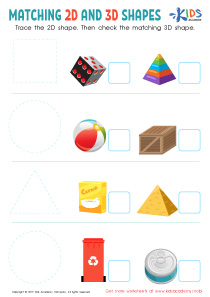Understanding fractions Fractions of Shapes Worksheets for Ages 7-8
22 filtered results
-
From - To
Explore our engaging "Understanding Fractions of Shapes Worksheets" designed specifically for children ages 7-8! This collection of worksheets helps young learners grasp the fundamental concepts of fractions through interactive shape analyses. Kids will practice identifying, comparing, and dividing different shapes into equal parts, enhancing their visual understanding of fractions. Our resources are perfect for classroom use or at-home learning, ensuring that each child develops essential math skills in a fun, approachable way. Encourage creativity and critical thinking as your child discovers how fractions are all around us! Download and watch their confidence in math grow!
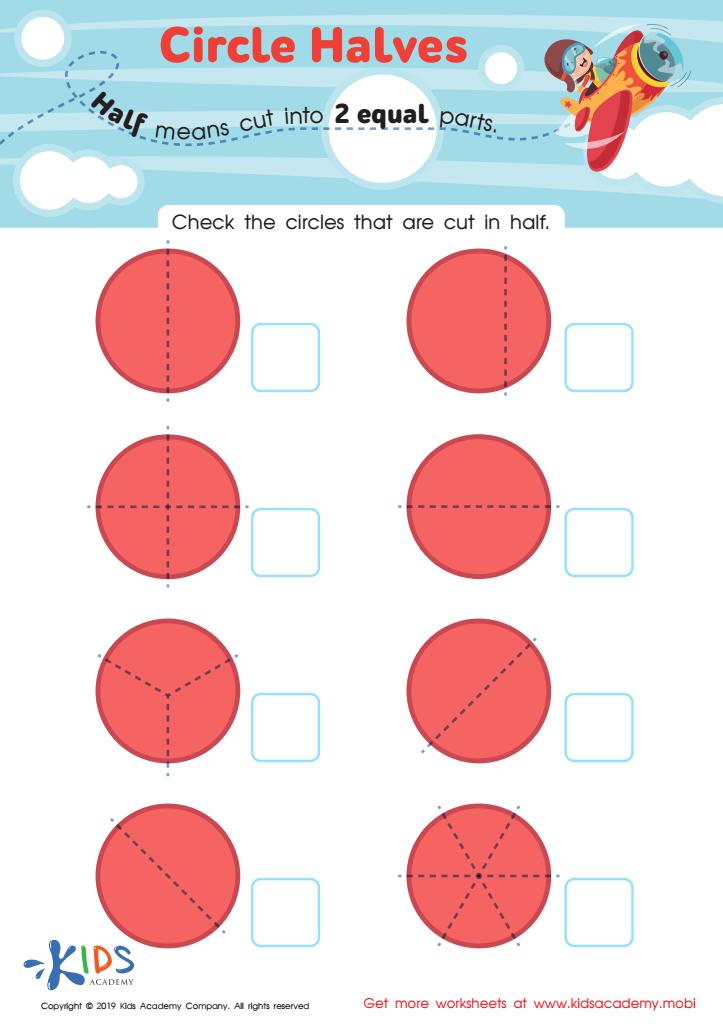

Circle Halves Worksheet
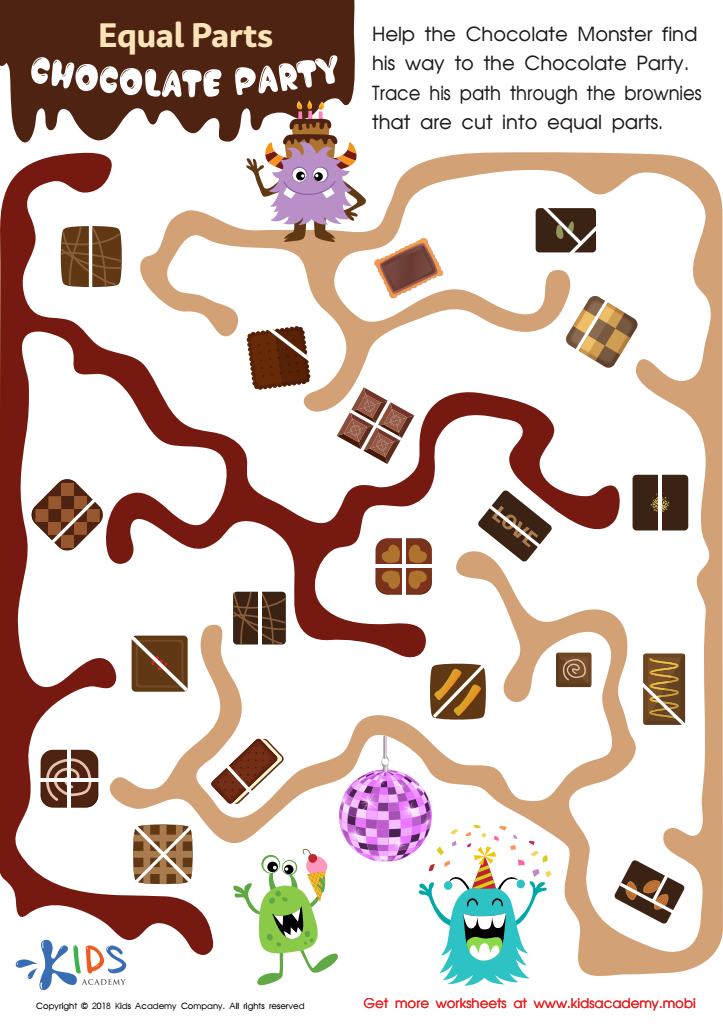

Equal Parts: Chocolate Party Worksheet
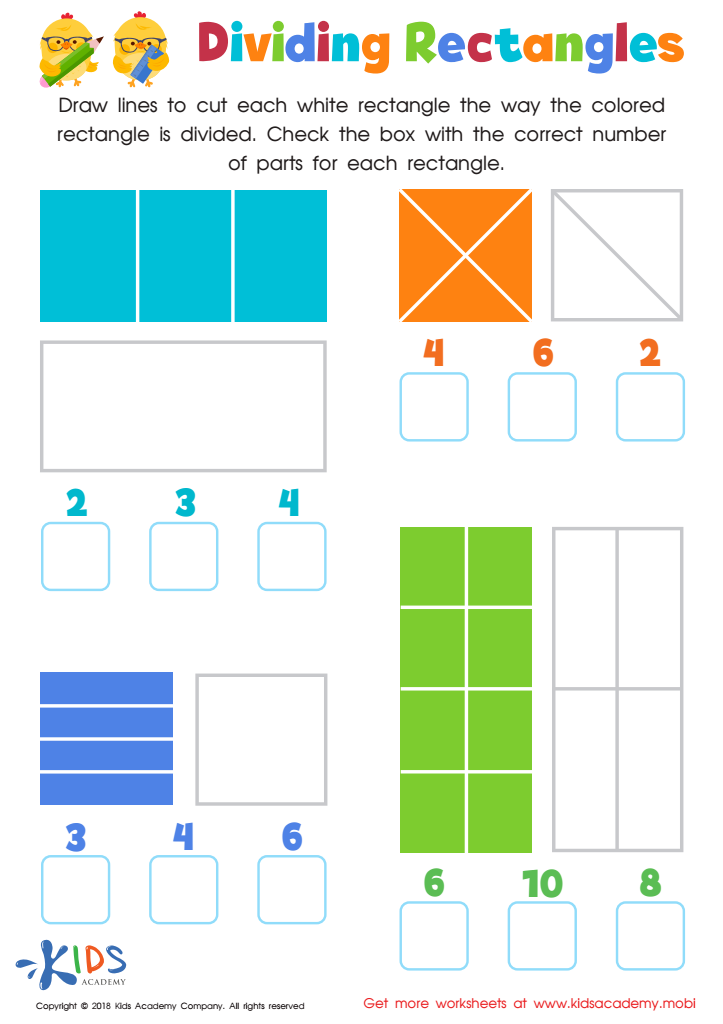

Dividing Rectangles Worksheet


Halves and Wholes on the Clock Worksheet
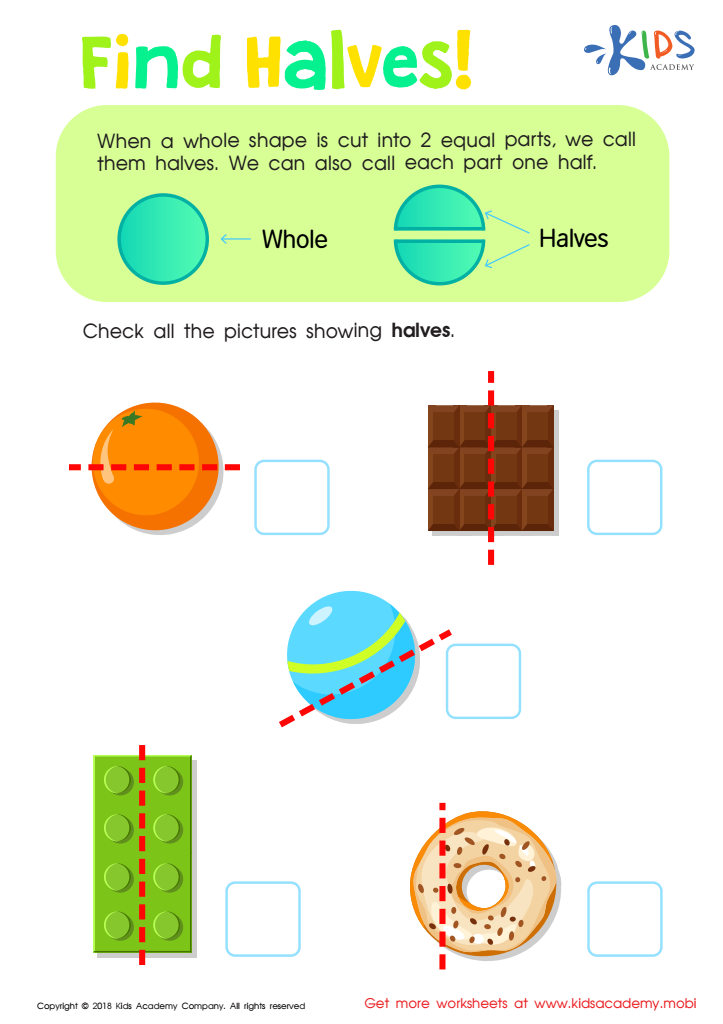

Find Halves Worksheet
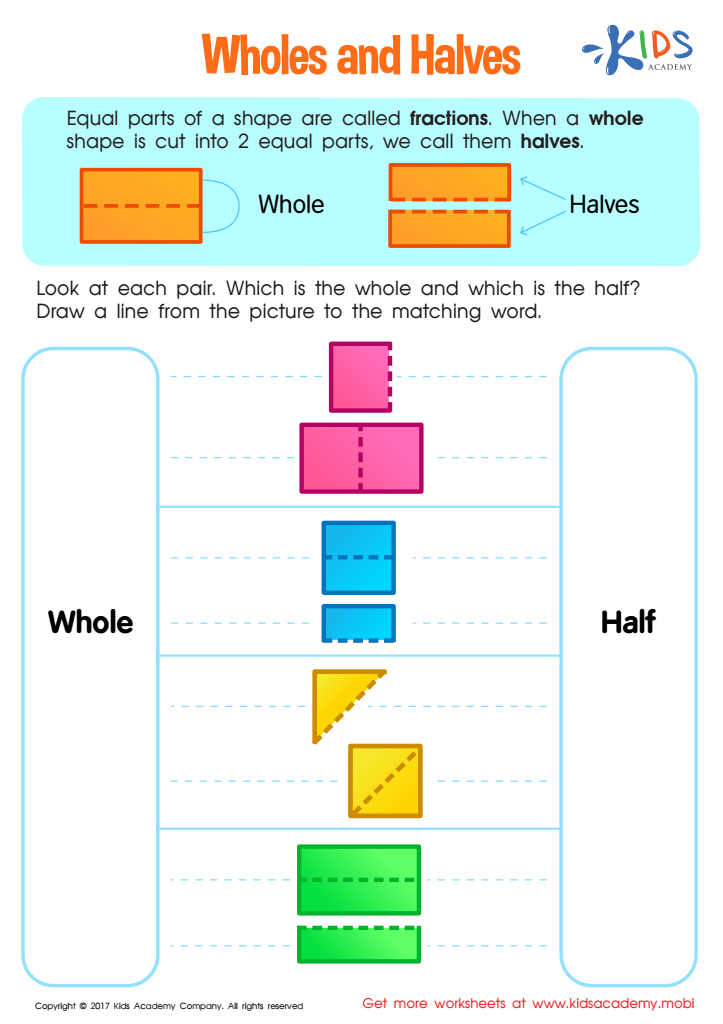

Wholes and Halves Worksheet
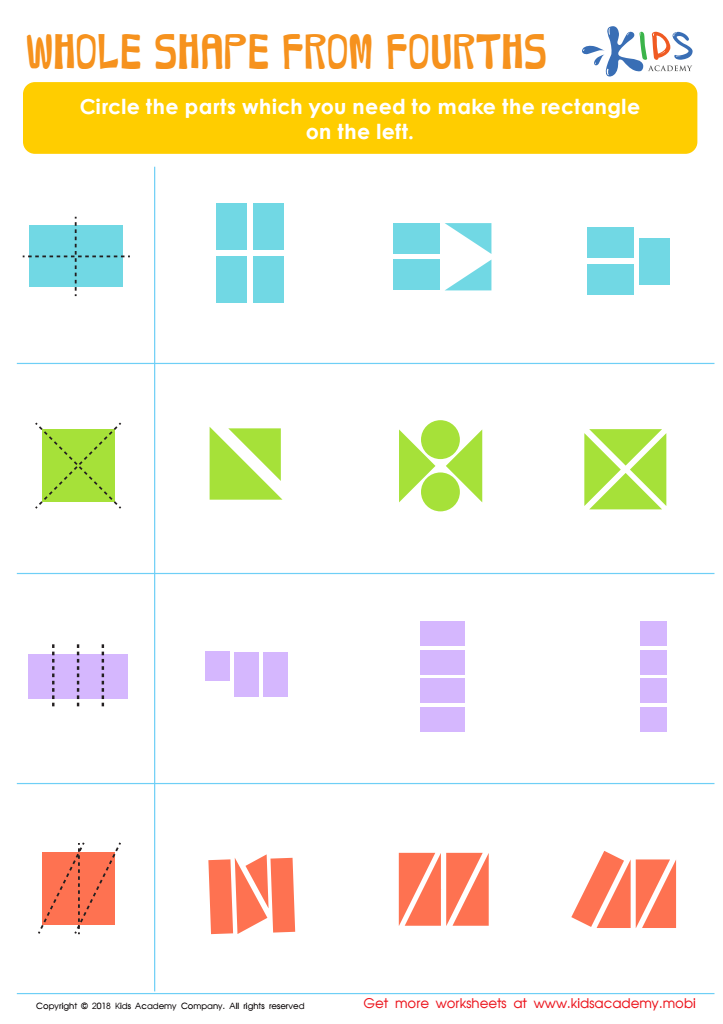

Whole Shape from Fourths Worksheet
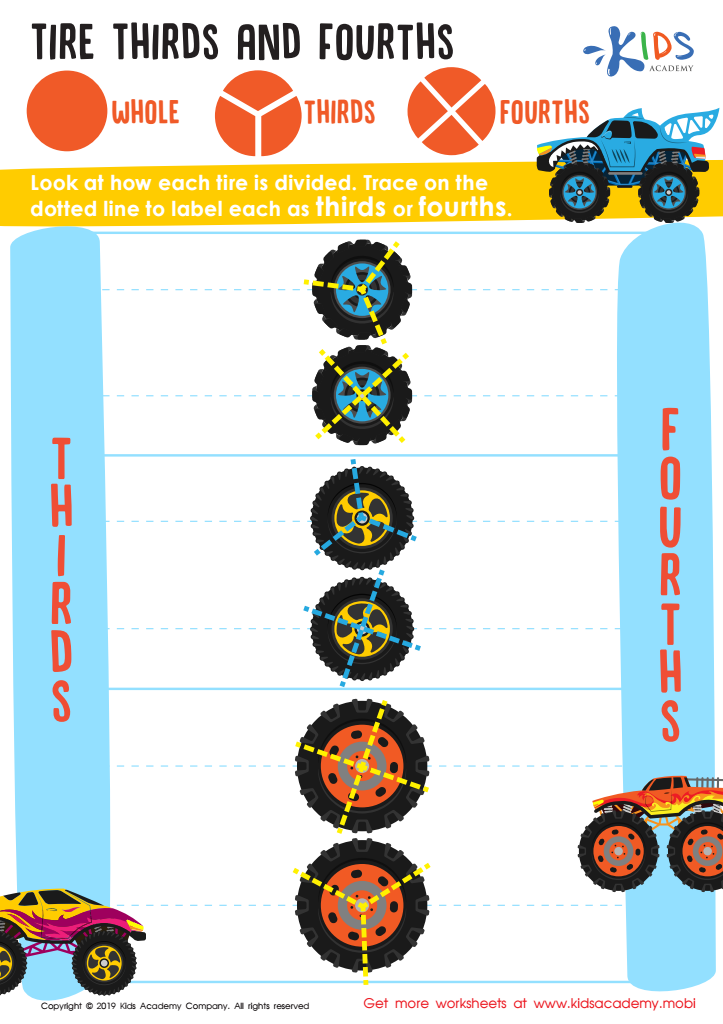

Tire Thirds and Fourths Worksheet
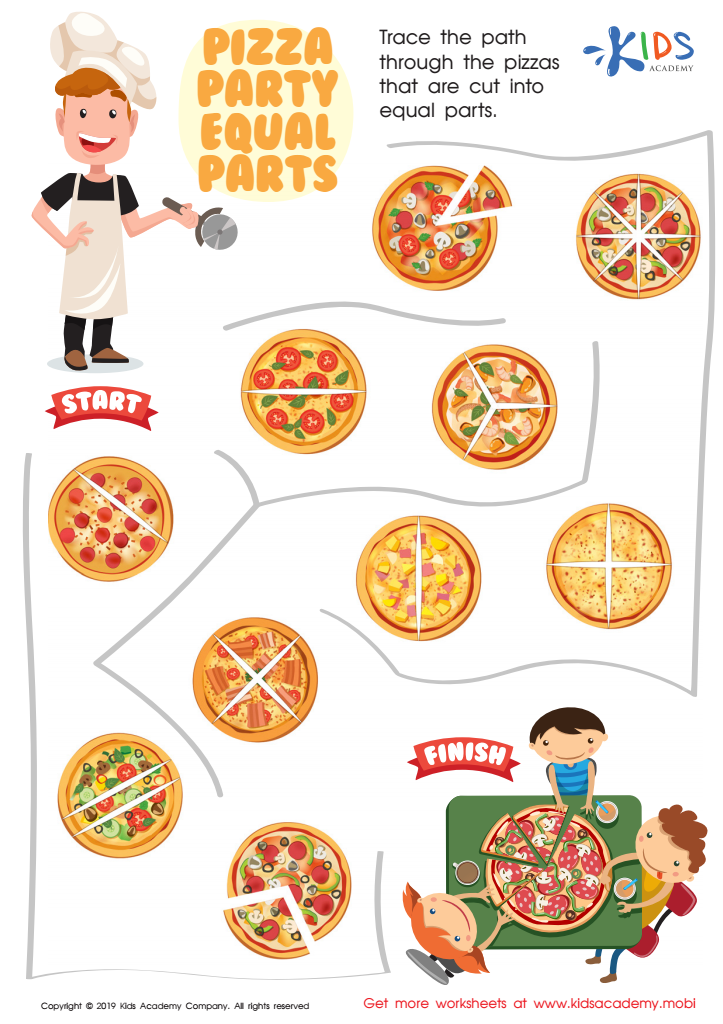

Pizza Party Equal Parts Worksheet
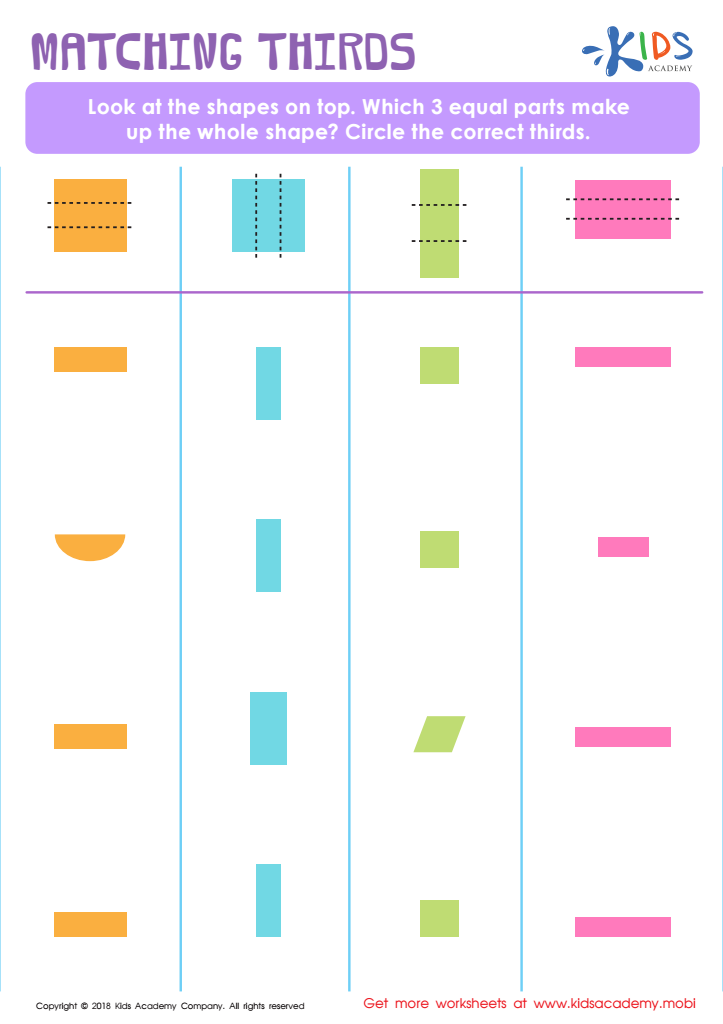

Matching Thirds Worksheet


Fractions: Shapes Worksheet
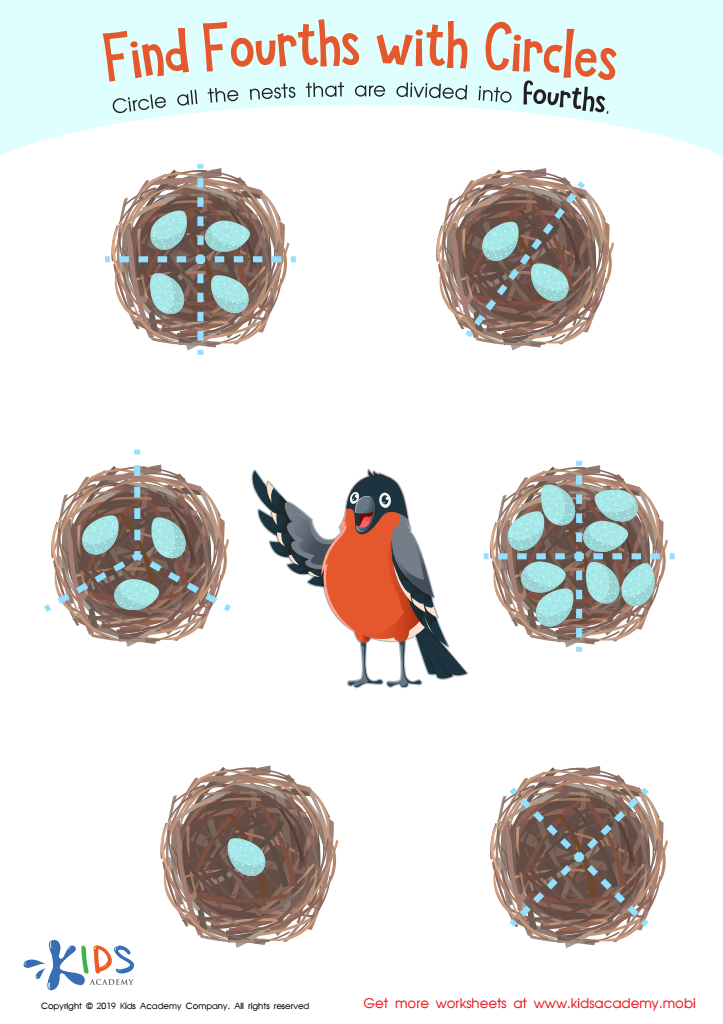

Find Fourths Circles Worksheet
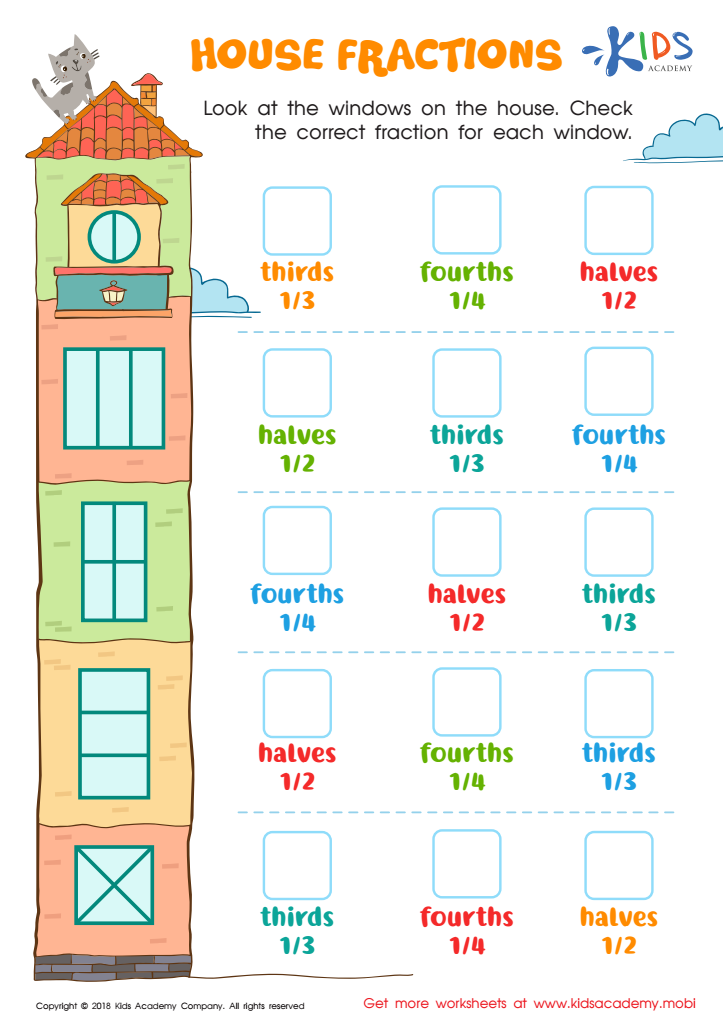

House Fractions Worksheet
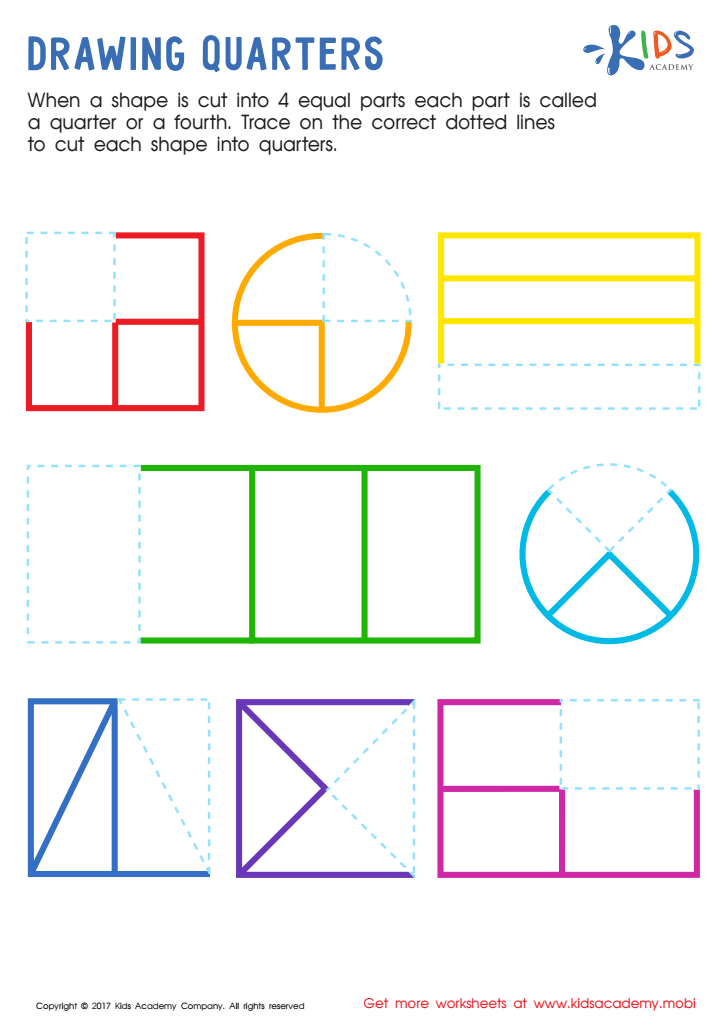

Drawing Quarters Worksheet
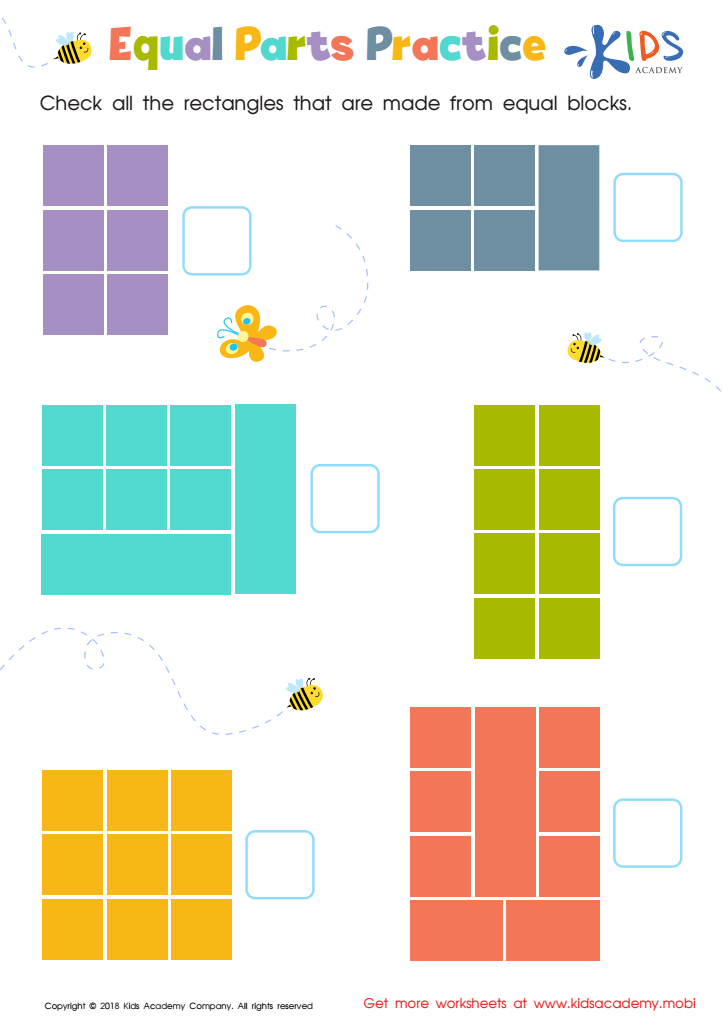

Equal Parts Practice Worksheet
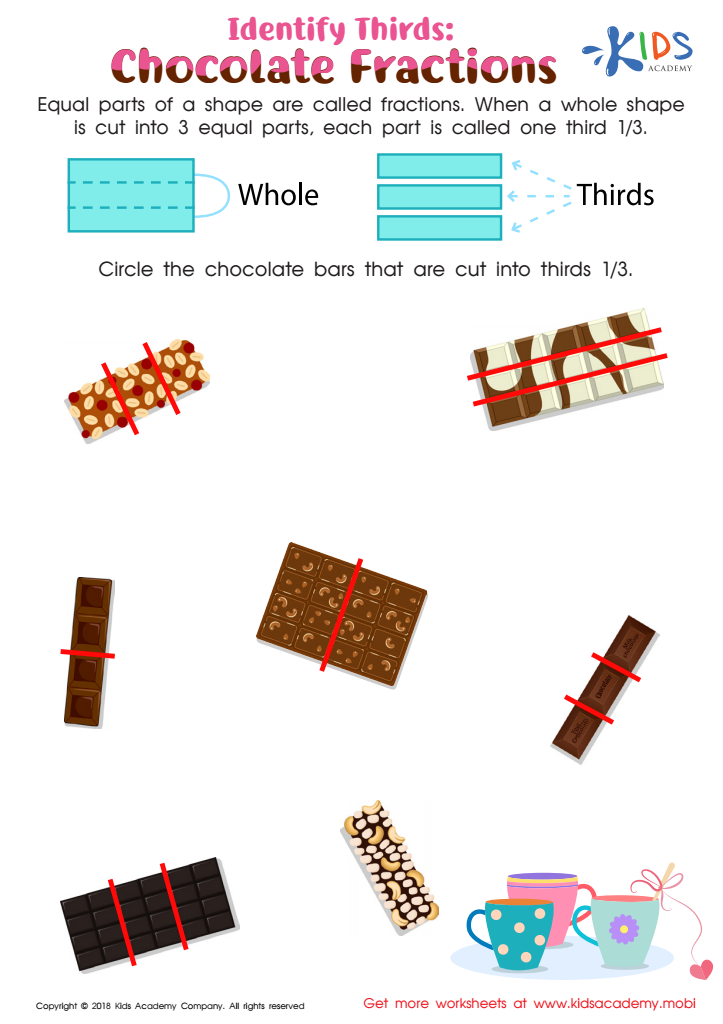

Identify Thirds: Chocolate Fractions Worksheet
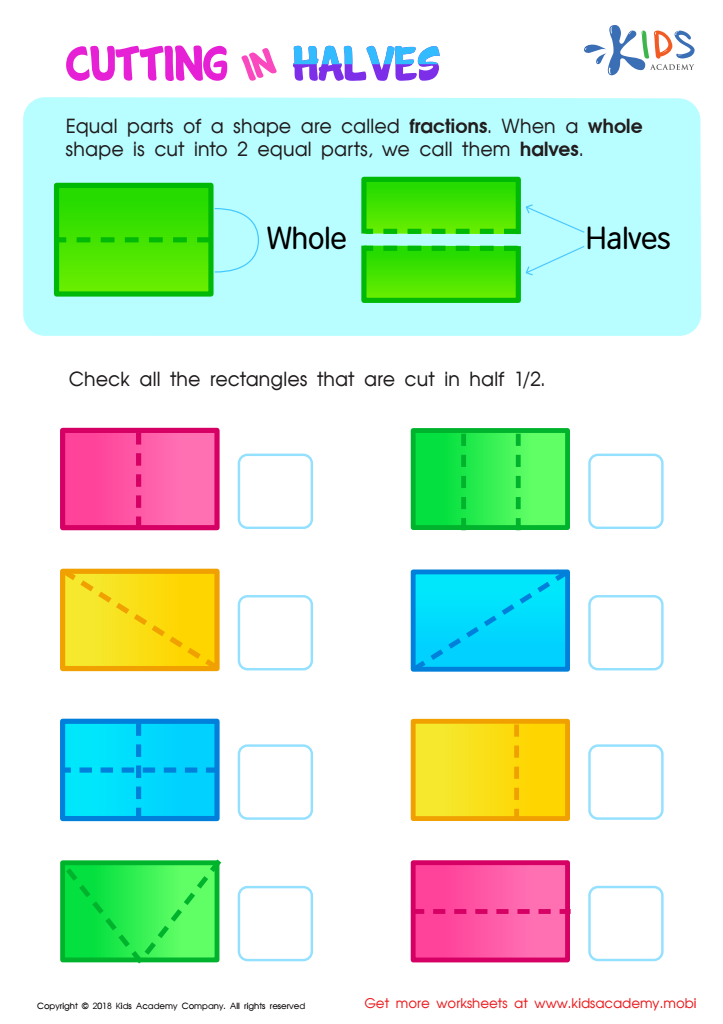

Cutting in Halves Worksheet
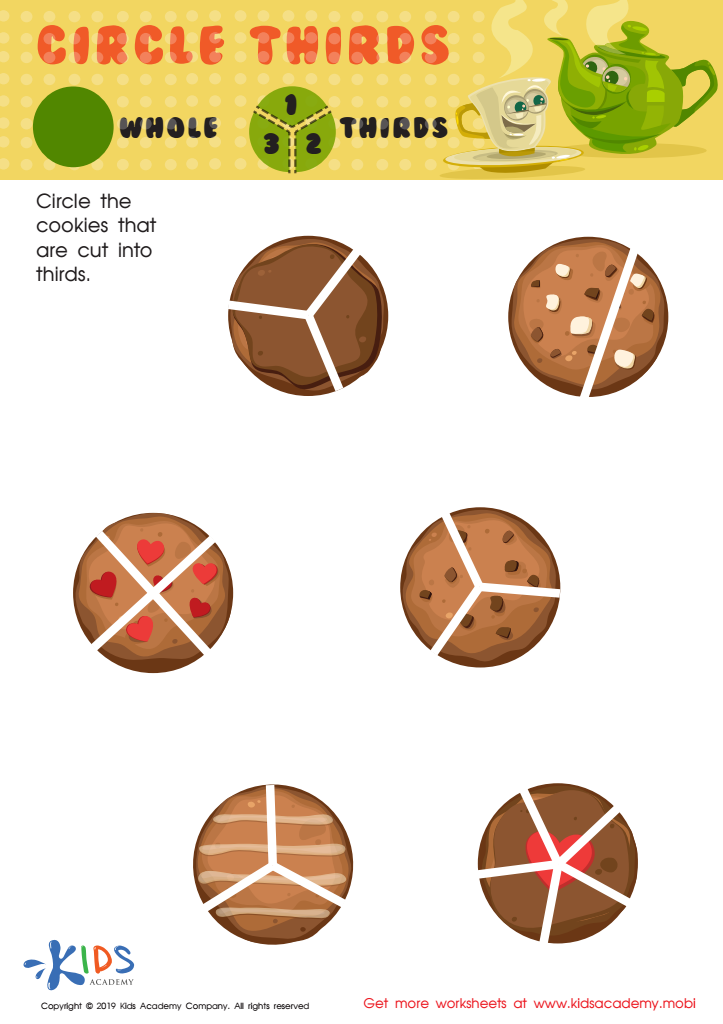

Circle Thirds Worksheet
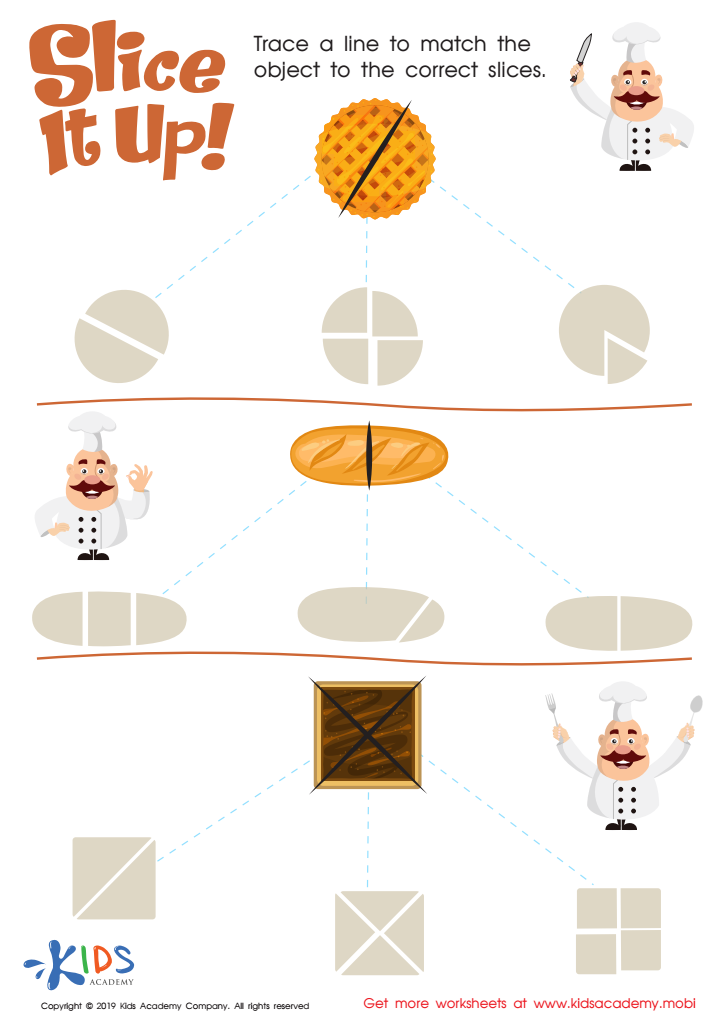

Slice It Up Worksheet
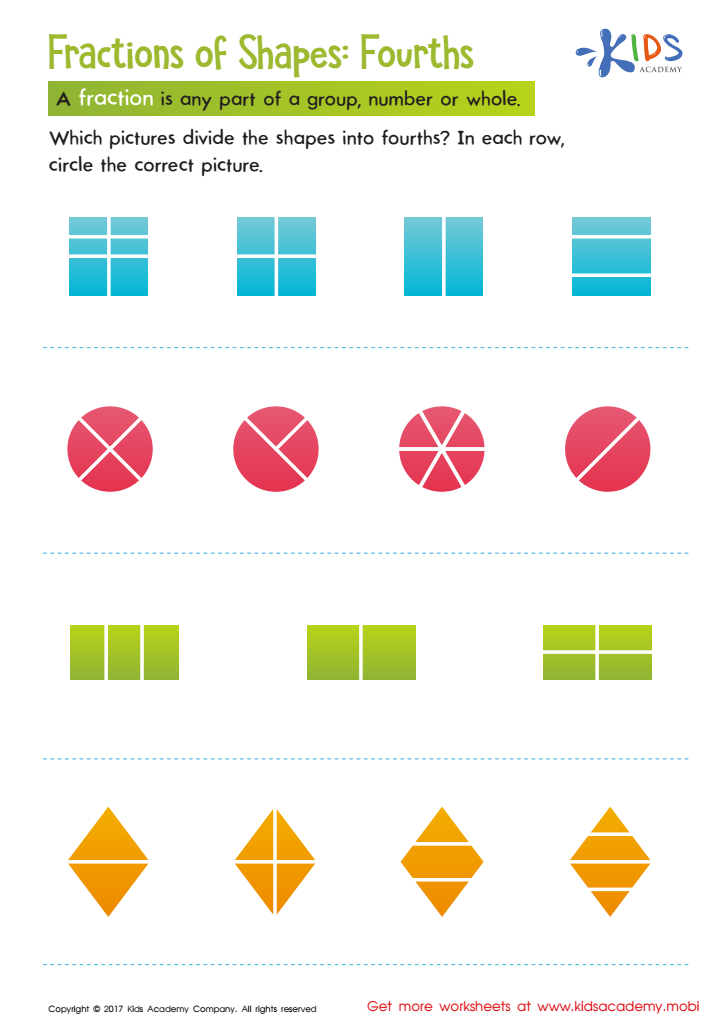

Fractions of Shapes Worksheet
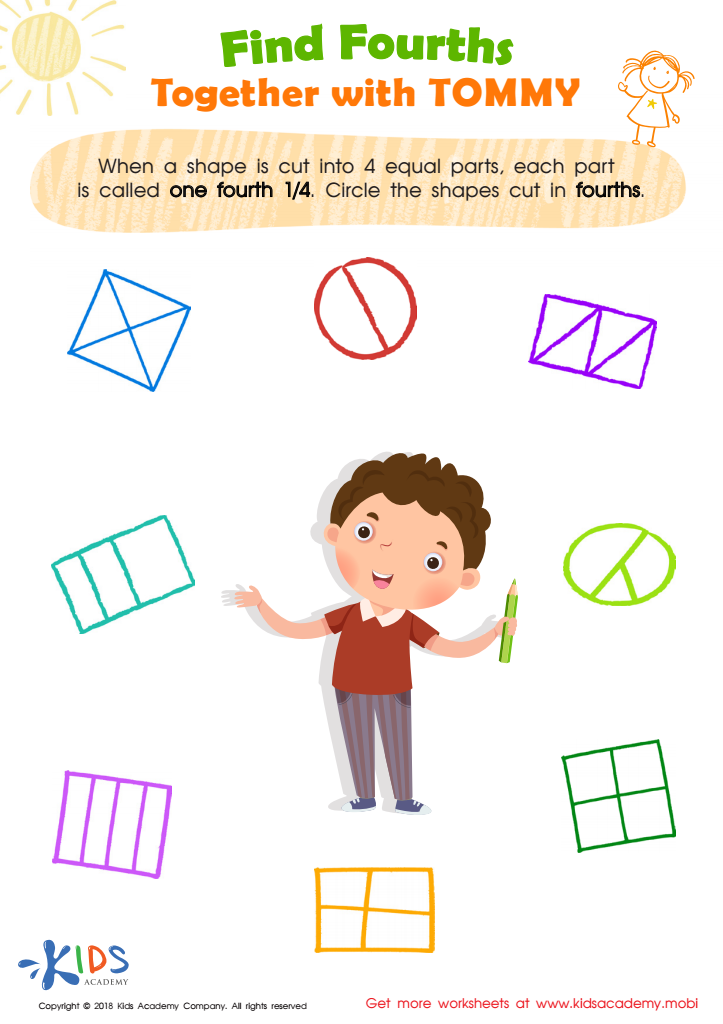

Find Fourths Together with Tommy Worksheet
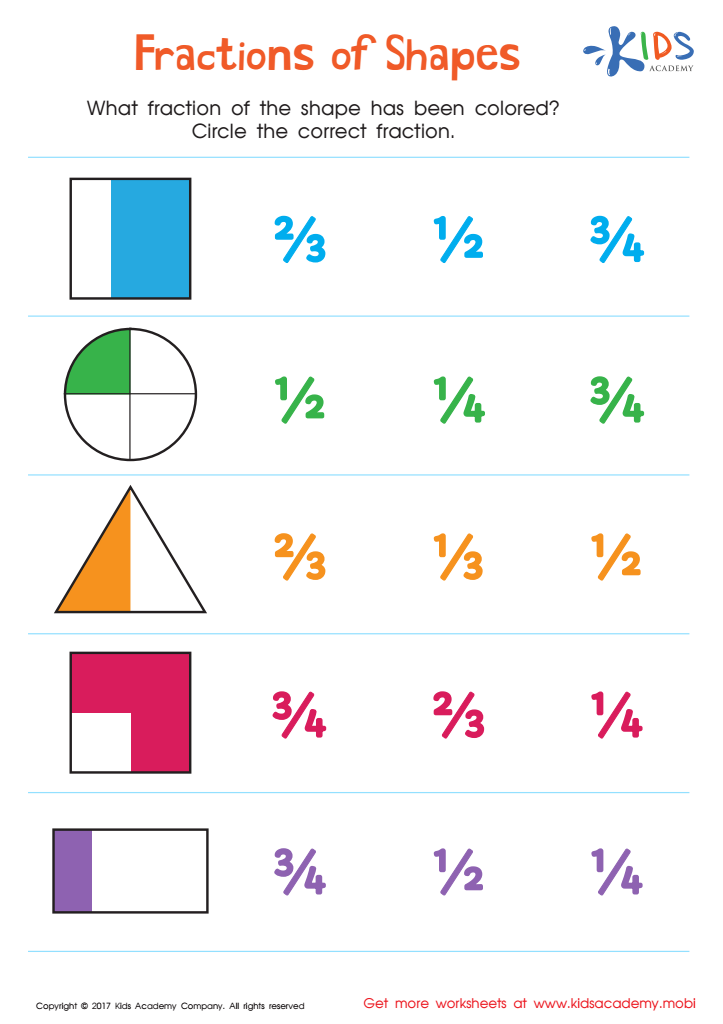

Fractions of Shapes: Math Concept Worksheet
Understanding fractions, especially fractions of shapes, is crucial for children aged 7-8, as it forms the foundation for their future mathematical learning. At this stage, children begin to grasp the concept of part-to-whole relationships, which is essential not just in math, but in everyday life. When children learn to divide shapes into equal parts, they develop spatial awareness and enhance their problem-solving skills.
Fractions of shapes also encourage critical thinking. By comparing the size of different fractions, children learn to analyze and reason through problems. For example, recognizing that a circle divided into four equal parts means each part is a quarter helps them visualize percentages and proportions later on.
Moreover, understanding fractions becomes increasingly important in higher grades, where more complex concepts such as ratios, decimals, and algebra emerge. Therefore, early exposure to fractions through engaging activities helps solidify these concepts and make learning enjoyable.
Parents and teachers play a pivotal role in supporting this understanding through practical applications, such as cooking or arts and crafts, effectively bridging classroom learning and real-life situations. Ultimately, fostering a positive attitude towards math at this age will empower children in their academic journey and build their confidence in tackling mathematical challenges.
 Assign to My Students
Assign to My Students







